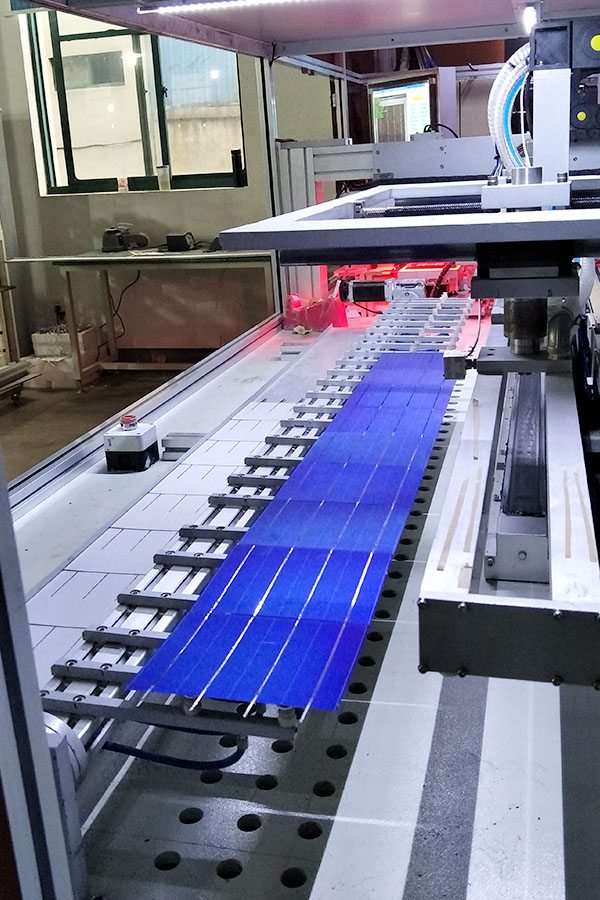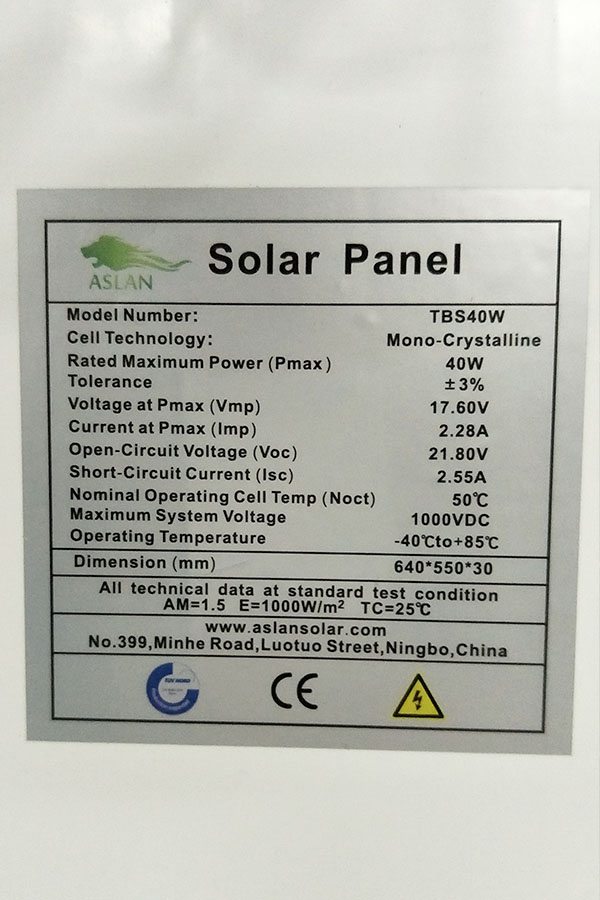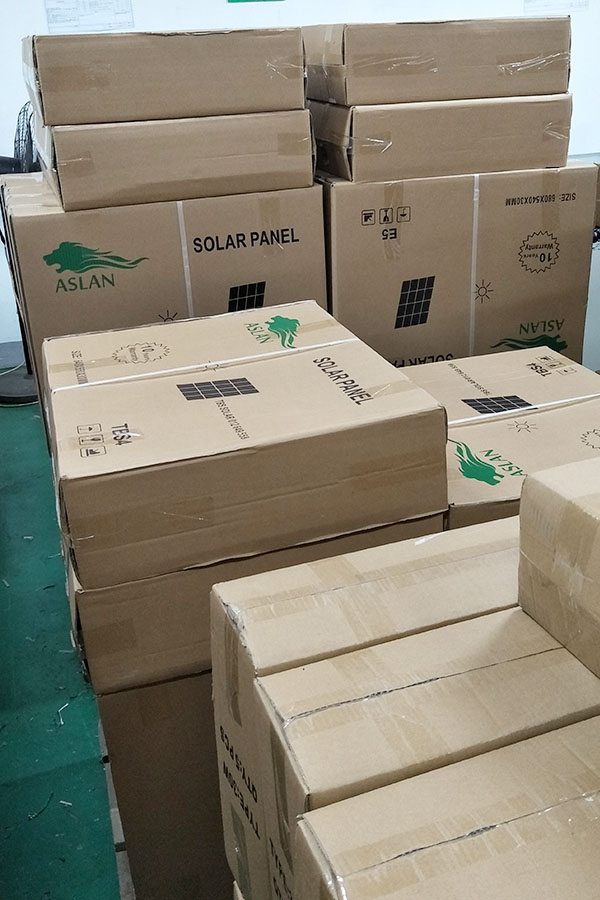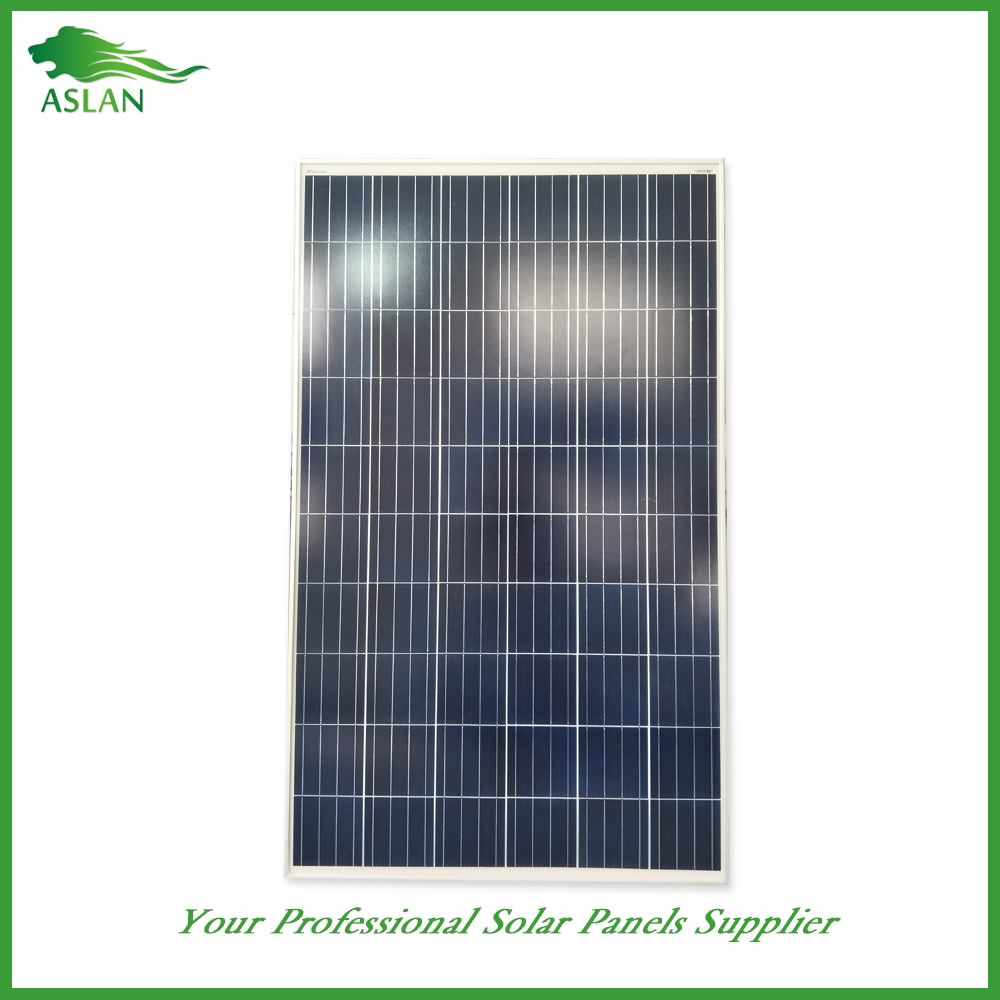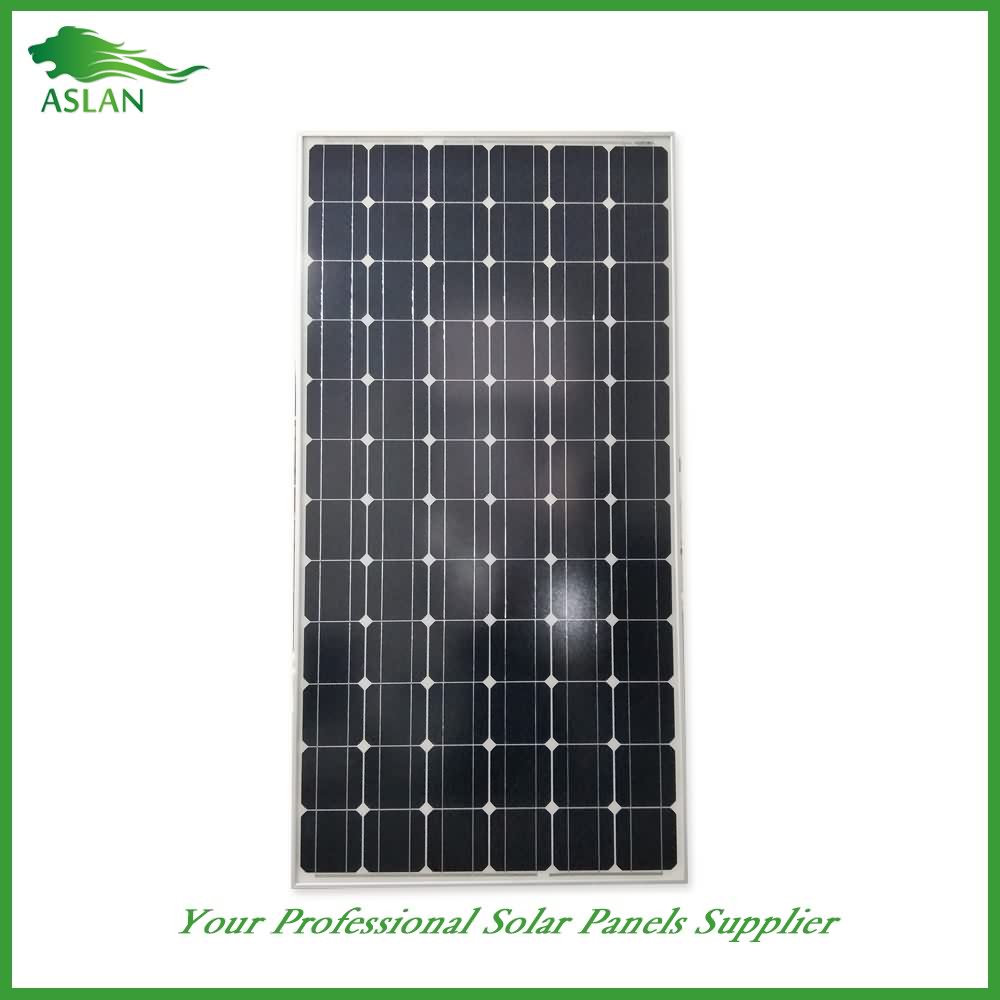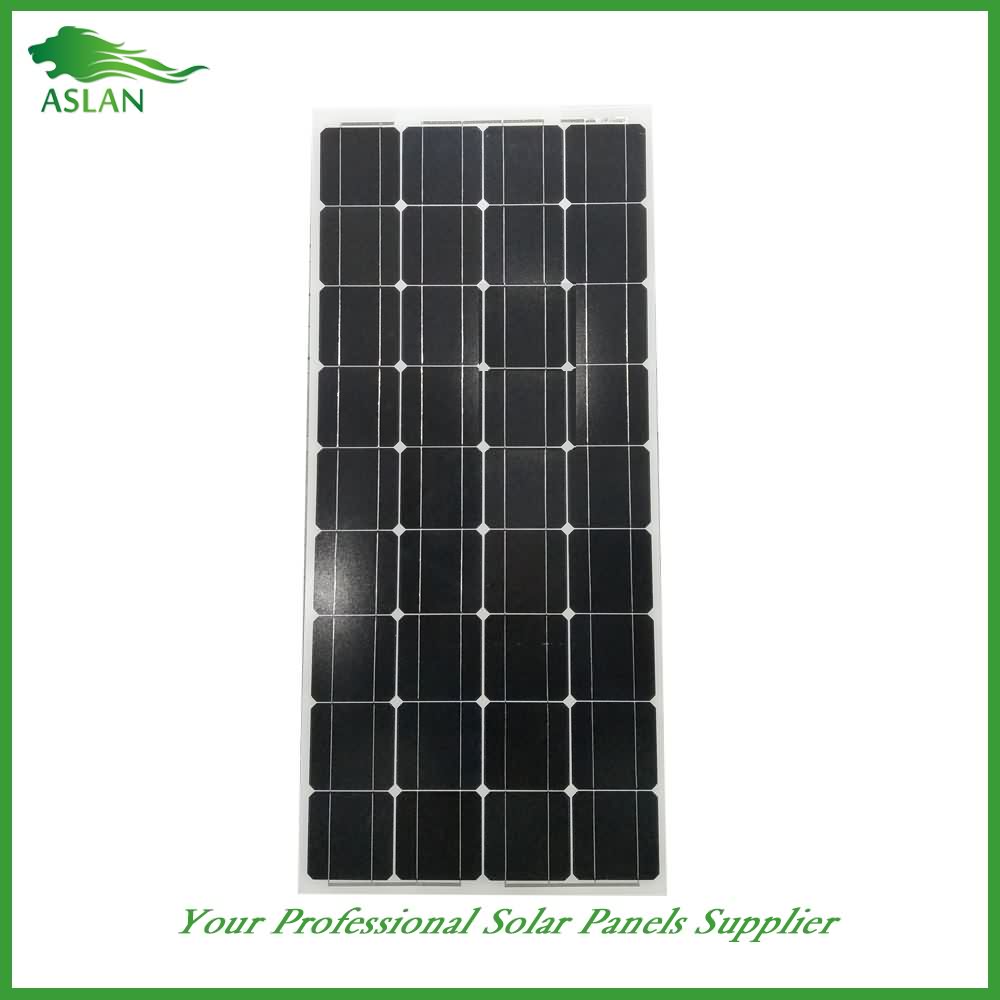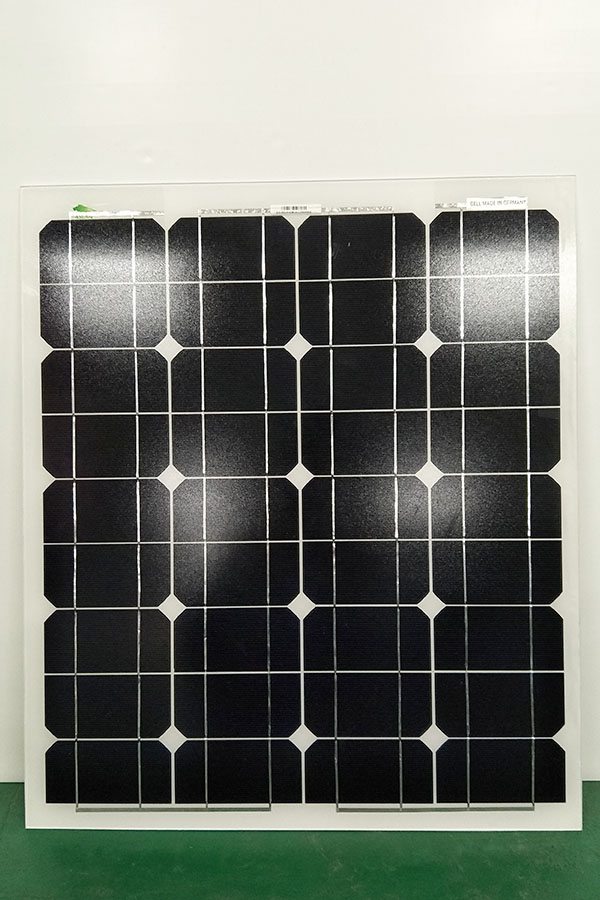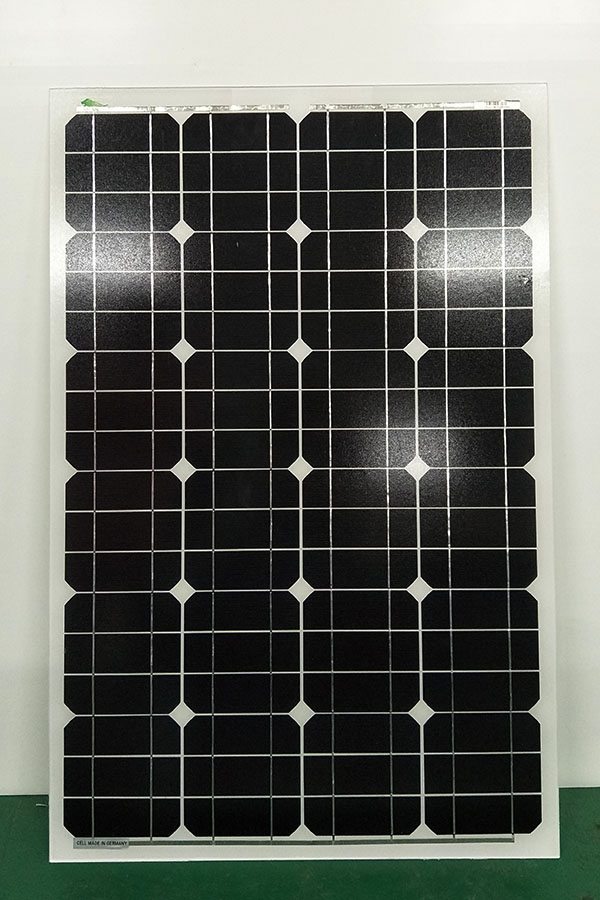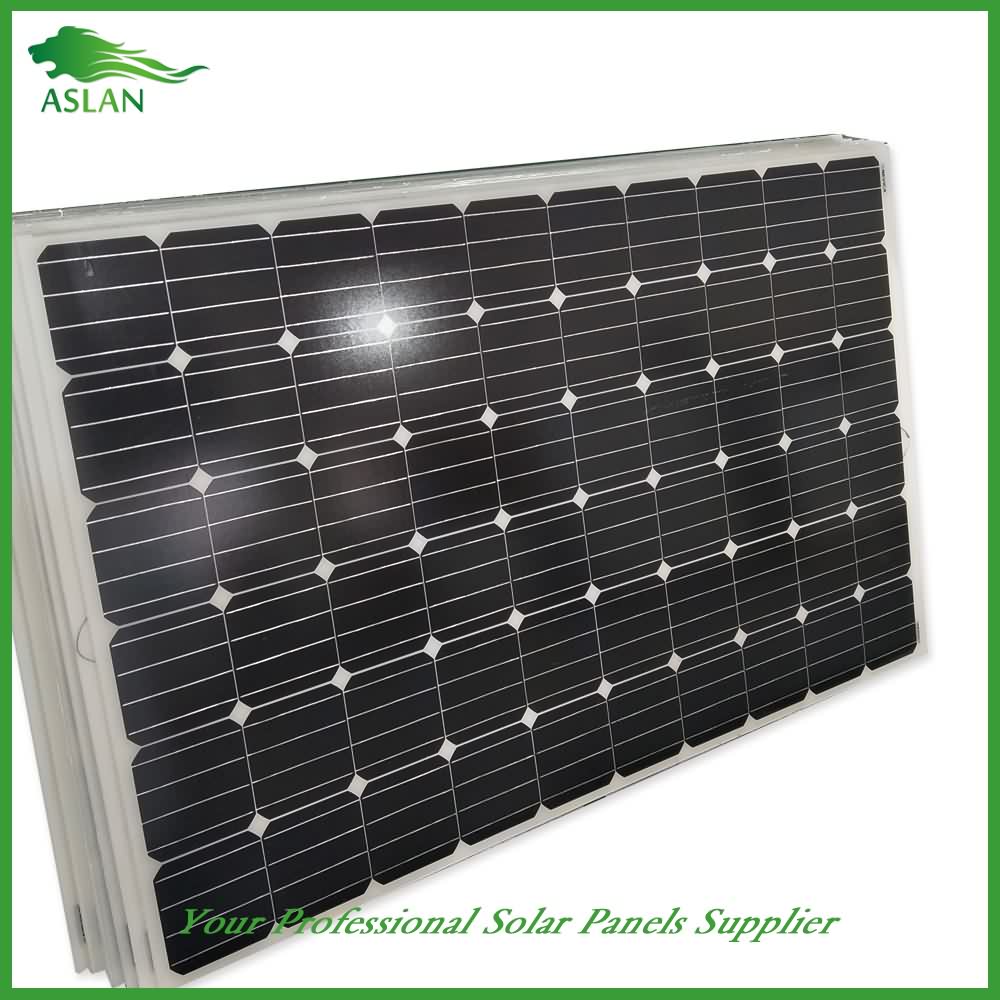Quality Inspection for Poly-crystalline Solar Panel 40W to Austria Manufacturer
Short Description:
All we do is always associated with our tenet " Customer first, Trust first, devoting on the food packaging and environmental protection for Quality Inspection for Poly-crystalline Solar Panel 40W to Austria Manufacturer, Welcome to contact us if you are interested in our product, we will give you a surprice for Qulity and Price.
Poly-crystalline Solar Panel 40W
Technical parameter
Maximum Power(W) 40W
Optimum Power Voltage(Vmp) 17.35V
Optimum Operating Current(Imp) 2.31A
Open Circuit Voltage(Voc) 21.16V
Short Circuit Current(Isc) 2.53A
Mechanical Characteristics
Cell Type Polycrystalline 156 x 52mm
No of Cell 36 (4x9pcs)
Dimensions 670x420x30mm
Weight 4.0Kg
Front Glass 3.5mm,High Transmission, Low Iron,Tempered Glass
Junction box IP65 Rated
Output Cable TUV 1×4.0mm2/UL12AWG,Length:900mm
Temperature and Coefficients
Operating Temperature(°C): -40°C ~ + 85°C
Maximum System Voltage: 600V(UL)/1000V(IEC) DC
Maximum Rated Current Series: 15A
Temperature Coefficients of Pmax: -0.47%
Temperature Coefficients of Voc: -0.389%
Temperature Coefficients of Isc: 0.057%
Nominal Operationg Cell Temperature (NOCT): 47+/-2°C
Materials of solar panel
1).Solar Cell——Polycrystalline solar cell 156*52mm
2).Front Glass——-3.2mm, high transmission, low iron, tempered glass
3).EVA——-excellent anti-aging EVA
4).TPT——-TPT hot seal made of flame resistance
5).Frame——anodized aluminum profile
6).Junction Box——-IP65 rated, high quality, with diode protection
Superiority: high quality anodized aluminum frame, high efficiency long life, easy installation, strong wind resistance, strong hail resistance.
Features
1. High cell efficiency with quality silicon materials for long term output stability
2. Strictly quality control ensure the stability and reliability, totally 23 QC procedures
3. High transmittance low iron tempered glass with enhanced stiffness and impact resistance
4. Both Poly-crystalline and Mono-crystalline
5. Excellent performance in harsh weather
6. Outstanding electrical performance under high temperature and low irradiance
Quality assurance testing
Thermal cycling test
Thermal shock test
Thermal/Freezing and high humidity cycling test
Electrical isolation test
Hail impact test
Mechanical, wind and twist loading test
Salt mist test
Light and water-exposure test
Moist carbon dioxide/sulphur dioxide
The Roseanne Barr / Cindy Sheehan campaign stands in solidarity with the Sikh community in Oak Creek, Wisc., in the aftermath of the terrible, bloody senseless massacre at the local temple of six people by the mentally deficient Wade Michael Page.
Satwant Singh Kaleka, 65, president of the Sikh Temple of Wisconsin, bravely fought back against the killer with a butter knife. He was killed but his actions allowed others to get to safety.
Suntech Power Holdings Co., Ltd. (NYSE: STP) (“Suntech” or the “Company”) today announced that it has obtained court orders to freeze the worldwide assets of GSF Capital and Mr. Javier Romero and to have an independent, court-appointed manager (the “Manager”) oversee their assets. In addition, the Manager has exercised the powers granted by the court to replace Mr. Romero as the manager of the general partner of the Global Solar Fund, S.C.A., Sicar (the “Fund”), thereby allowing the court-appointed Manager to take control of the Fund.
Dr. Zhengrong Shi, Suntech’s chairman and CEO said, “Our first priority is to protect the interests of our shareholders, and we are pleased that our litigation initiatives have been successful to date. The court-appointed Manager has already removed Mr. Romero from any management role in the Fund and is in the process of gaining control of the Fund’s operating assets. The rest of the Fund’s current management team is still in place and we look forward to continuing our working relationship with them in the future.”
“Our initial due diligence indicates that the solar plants owned and operated by the Fund’s operating companies are in good order,” Dr. Shi continued. “Over the coming weeks we intend to work closely with the Manager to review all of the assets and confirm that the operations are in line with our initial expectations.”
Based on Suntech’s initial due diligence, the Fund’s operating companies currently own and operate approximately 142MW of completed solar plants in Italy, of which 141MW are connected to the grid and generating revenues through the sale of electricity at wholesale rates. In addition, approximately 74MW of the total connected plants are currently receiving energy payments under the Italian feed-in-tariff program, and the remainder are expected to be accepted into the feed-in-tariff program within the coming months. Suntech noted that the above findings are not conclusive and the Company is continuing to investigate this matter.
About Suntech
Suntech Power Holdings Co., Ltd. (NYSE: STP) produces industry-leading solar products for residential, commercial, industrial, and utility applications. With regional headquarters in China, Switzerland, and the United States, and gigawatt-scale manufacturing worldwide, Suntech has delivered more than 25,000,000 photovoltaic panels to over a thousand customers in more than 80 countries. Suntech’s pioneering R&D creates customer-centric innovations that are driving solar to grid parity against fossil fuels. Our mission is to provide everyone with reliable access to nature’s cleanest and most abundant energy source.
What is FLEXIBLE ELECTRONICS? What does FLEXIBLE ELECTRONICS mean? FLEXIBLE ELECTRONICS meaning – FLEXIBLE ELECTRONICS definition -FLEXIBLE ELECTRONICS explanation.
Source: Wikipedia.org article, adapted under https://creativecommons.org/licenses/by-sa/3.0/ license.
Flexible electronics, also known as flex circuits, is a technology for assembling electronic circuits by mounting electronic devices on flexible plastic substrates, such as polyimide, PEEK or transparent conductive polyester film. Additionally, flex circuits can be screen printed silver circuits on polyester. Flexible electronic assemblies may be manufactured using identical components used for rigid printed circuit boards, allowing the board to conform to a desired shape, or to flex during its use. An alternative approach to flexible electronics suggests various etching techniques to thin down the traditional silicon substrate to few tens of micrometers to gain reasonable flexibility (~ 5 mm bending radius).
Flexible printed circuits (FPC) are made with a photolithographic technology. An alternative way of making flexible foil circuits or flexible flat cables (FFCs) is laminating very thin (0.07 mm) copper strips in between two layers of PET. These PET layers, typically 0.05 mm thick, are coated with an adhesive which is thermosetting, and will be activated during the lamination process. FPCs and FFCs have several advantages in many applications:
Tightly assembled electronic packages, where electrical connections are required in 3 axes, such as cameras (static application).
Electrical connections where the assembly is required to flex during its normal use, such as folding cell phones (dynamic application).
Electrical connections between sub-assemblies to replace wire harnesses, which are heavier and bulkier, such as in cars, rockets and satellites.
Electrical connections where board thickness or space constraints are driving factors.
Flex circuits are often used as connectors in various applications where flexibility, space savings, or production constraints limit the serviceability of rigid circuit boards or hand wiring. A common application of flex circuits is in computer keyboards; most keyboards use flex circuits for the switch matrix.
In LCD fabrication, glass is used as a substrate. If thin flexible plastic or metal foil is used as the substrate instead, the entire system can be flexible, as the film deposited on top of the substrate is usually very thin, on the order of a few micrometres.
Organic light-emitting diodes (OLEDs) are normally used instead of a back-light for flexible displays, making a flexible organic light-emitting diode display.
Most flexible circuits are passive wiring structures that are used to interconnect electronic components such as integrated circuits, resistor, capacitors and the like, however some are used only for making interconnections between other electronic assemblies either directly or by means of connectors.
In the automotive field, flexible circuits are used in instrument panels, under-hood controls, circuits to be concealed within the headliner of the cabin, and in ABS systems. In computer peripherals flexible circuits are used on the moving print head of printers, and to connect signals to the moving arm carrying the read/write heads of disk drives. Consumer electronics devices make use of flexible circuits in cameras, personal entertainment devices, calculators, or exercise monitors.
Flexible circuits are found in industrial and medical devices where many interconnections are required in a compact package. Cellular telephones are another widespread example of flexible circuits.
Flexible solar cells have been developed for powering satellites. These cells are lightweight, can be rolled up for launch, and are easily deployable, making them a good match for the application. They can also be sewn into backpacks or outerwear.

